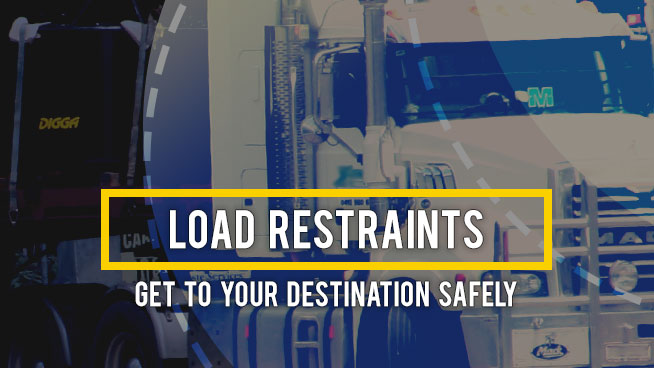


Why you need to restrain your load
Just like any unrestrained person in a vehicle, loads can move forwards, backwards, sideways, and upwards:
- Forward shifts are caused by braking whilst driving forward, accelerating in reverse, or downhill slopes.
- Backward shifts are caused by braking in reverse, accelerating forward, or uphill slopes.
- Sideways shifts are caused by cornering, or cambered roads.
- Upward shifts are caused by uneven road surfaces.
The importance of following load restraint guidelines
- SAFETY - Loads not restrained properly can injure or kill and can cause significant property damage:
- The load may fall off and endanger the lives of other road users.
- The load may move forwards and endager the lives of the driver or passenger.
- The load could make your vehicle unstable and cause an incident, especially when taking corners.
- IT'S GOOD FOR BUSINESS - Your corporate reputation and financial position may suffer if you are involved in a load restraint incident:
- Adverse publicity.
- You may experience loss of contracts due to damaged goods.
- You may face insurance excess payments nad an increase in insurance premiums.
- UNRESTRAINED LOADS MAY MOVE - Changes in speed, direction or slope may cause a load to shift:
- These forces result from normal driving conditions including braking, accelerating, cornering, road surfaces and air flow.
- The weight of a load is not enough to hold it in place. A heavy load is just as likely to fall off as a light load because the heavier the load, the higher the forces it experiences.
- LAW COMPLIANCE - If you are involved in packing, loading, moving, or unloading a vehicle, you are responsible for complying with load restraint laws.
For a more comprehensive guide, please refer to the load restraint guidelines document.


 ALL RIGHTS RESERVED -
ALL RIGHTS RESERVED -